The Paradox of Choice in Photography: Why Less is More
And how a cow yesterday made me realize that film isn’t just about nostalgia: it’s my secret weapon for building a rock-solid photographic style. Thanks, Bessie, you look great on my Bessa! 🤎 🐮 🤎
There’s a strange magic in film photography: one that doesn’t exist in digital. The commitment, the anticipation, the waiting. We load a roll not knowing exactly what we’ll encounter, only hoping that our choice will pay off. And sometimes, just sometimes, life decides to reward that patience in the most unexpected ways, but, can it be actually called a reward?
There’s something deeper at play here that I would like to unpack, something Barry Schwartz described in his TED Talk as the Paradox of Choice. In a nutshell, it talks about the idea that having too many options doesn’t necessarily lead to more freedom, but rather, the very opposite, as increases anxiety, indecision, dissatisfaction, and ultimately, stress, ultimately leading to stagnation.
Digital photography is the embodiment of unlimited choice, an endless buffet of settings, filters, color grading, color presets, editing software, curves, HSL (hue-saturation-luminance) color grading, spot removal, texture, details, sharpness, HDR, focus stacking, grain, vignetting, yada yada yada…
The irony here, and the co-relation with the paradox of choice, is that the ability to instantly see and tweak results, combined with endless possibilities should, in theory, make photography easier, but instead, it often makes it harder. The stress from having to make choices allowed by the abundance of possibilities simply paralyze creativity, making it difficult to commit to a single aesthetic, a single mood, a unison message across different moments and photographic events.
It makes portifolio creation harder, and that’s what my friend Bessie helped me realizing yesterday. More on Bessie and this insight later, but I think you know where this is going…
Film, on the other hand, removes a lot from the burden of choice. You load a roll, and that’s your look. Portra will always give its pastel tones. Ektar will always bring out vibrancy. CineStill will always bathe neon lights and the signature halation glow. These characteristics become part of your artistic language, not something you manipulate after the fact, but something you embrace as part of the photographic process.
With film, you don’t endlessly scroll through presets or worry if a different color grade might have been better. You accept what was given to you, and in doing so, you make stronger creative decisions.
I had loaded my camera with Kodak Ektar 100. It wasn’t a calculated decision, more of a gut feeling. The day looked bright, the light promising. Ektar loves sunlight, and I thought, why not? I had no particular subject in mind, no grand plan, just the usual habit of carrying my camera, ready for whatever the world threw at me.
Then, as if orchestrated by some unseen force, I found myself on a road trip through Connecticut, passing by the Stamford Museum & Nature Center. And there it was, the perfect scene, the perfect subject, the perfect match for Ektar 100. Bessie stood there, posing with its rich brown hide glowing under the crisp daylight. The way the sunlight hit the fields, the rustic wooden fences, this was exactly the kind of environment Ektar 100 was born for. Bessie was having a meal, and me, food for thought.
I could have loaded something else, a monochrome stock, a high-speed film, but I hadn’t. It was as if the universe had nudged me in the right direction without me even knowing. But was that a gift, or a lemonade I did with the lemons life had given to me?
That’s what makes film so special. The beauty isn’t just in the final image, but in the spontaneity of the process. The end justifies the means. You make choices, you take chances, and then, sometimes, the world answers back. The perfect light, the perfect subject, and the perfect roll of film already sitting in your camera, waiting for the moment to arrive, and it’s up to me to go after this moment.
I think the question still persist, was it really a gift? Or was it me looking for the best scene Kodak Ektar 100 could ever provide? How much of my influence, driven by the film stock, play on finding this scene? Would I think the same way if guided be a digital sensor? Or do we have the paradox of choice be at play here, releasing me on having to think about the endless possibilities and stress, and focusing on finding something?
This is where film diverges from digital in a way that feels philosophical.
This all ties back to Barry Schwartz’s Paradox of Choice. Digital photography offers unlimited choices, the white balance, exposure shift, swap colors, fix geometry, the myriad of Lightroom presets, and on and on. But with more options comes more uncertainty.
To me, that uncertainty becomes inconsistency, because the weight of all these decisions dilute the message, making it harder to commit to a cohesive style, a singular vision. You can tweak and refine indefinitely, but does that really make your portfolio consistent? Or does it just make you more indecisive and stressed about the choices you have to make?
Film resolves that for you. It forces a commitment before the shutter even clicks. The choice happens at the moment you load the roll, and not in front of a computer screen (well, it also does, but you got it). It simplifies things out.
The main point is: instead of drowning in a sea of options, you work with what you have, and that what I mean when I say that limitation becomes a source of strength. Film stocks give you a signature look that is unshakable, unchangeable, and then it's your turn to find something that you feel it would look nice.
Film helps you being assertive. It helps you building a stronger language, and it helps you be remembered as a photographer.
In a world drowning in infinite possibilities, constraints are the real creative gift. As Barry Schwartz said in the Paradox of Choice, the fewer decisions we have to make, the more intentional we become. The more we embrace what we have, the more meaning we find in it.
Film forces us to make peace with our choices, and that’s exactly why it feels so rewarding. The paradox is that by removing choices, film actually expands creativity. I wish I had started my film photography journey a decade ago, for sure I would have a way more cohesive portifolio and language.
Do you also feel the same? Are you mostly a digital or film photographer? Does that all make sense, or it's just a big pile of nonsense ideas? Let me know what you think, please! And as usual, thanks for reading. ✌🏼





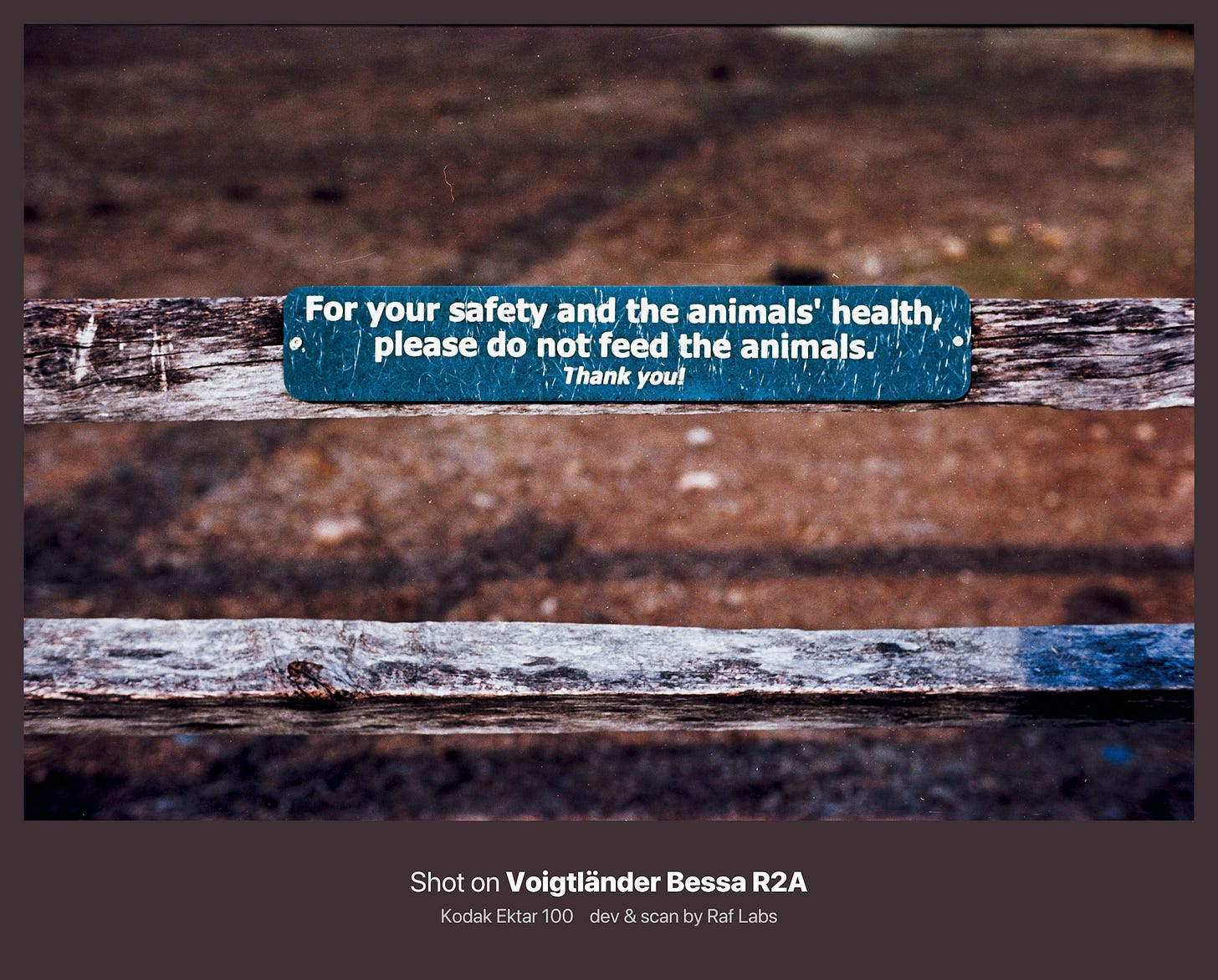
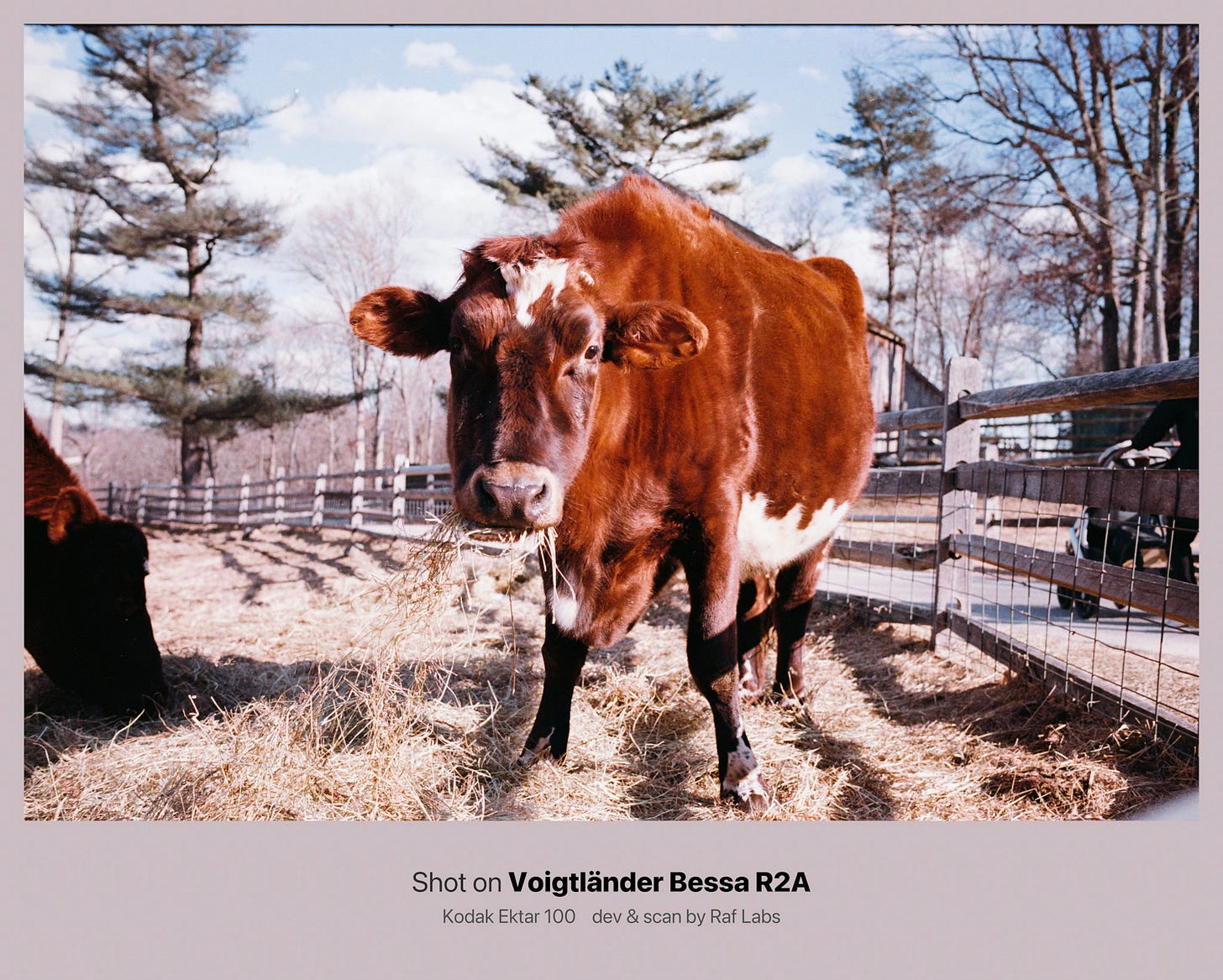
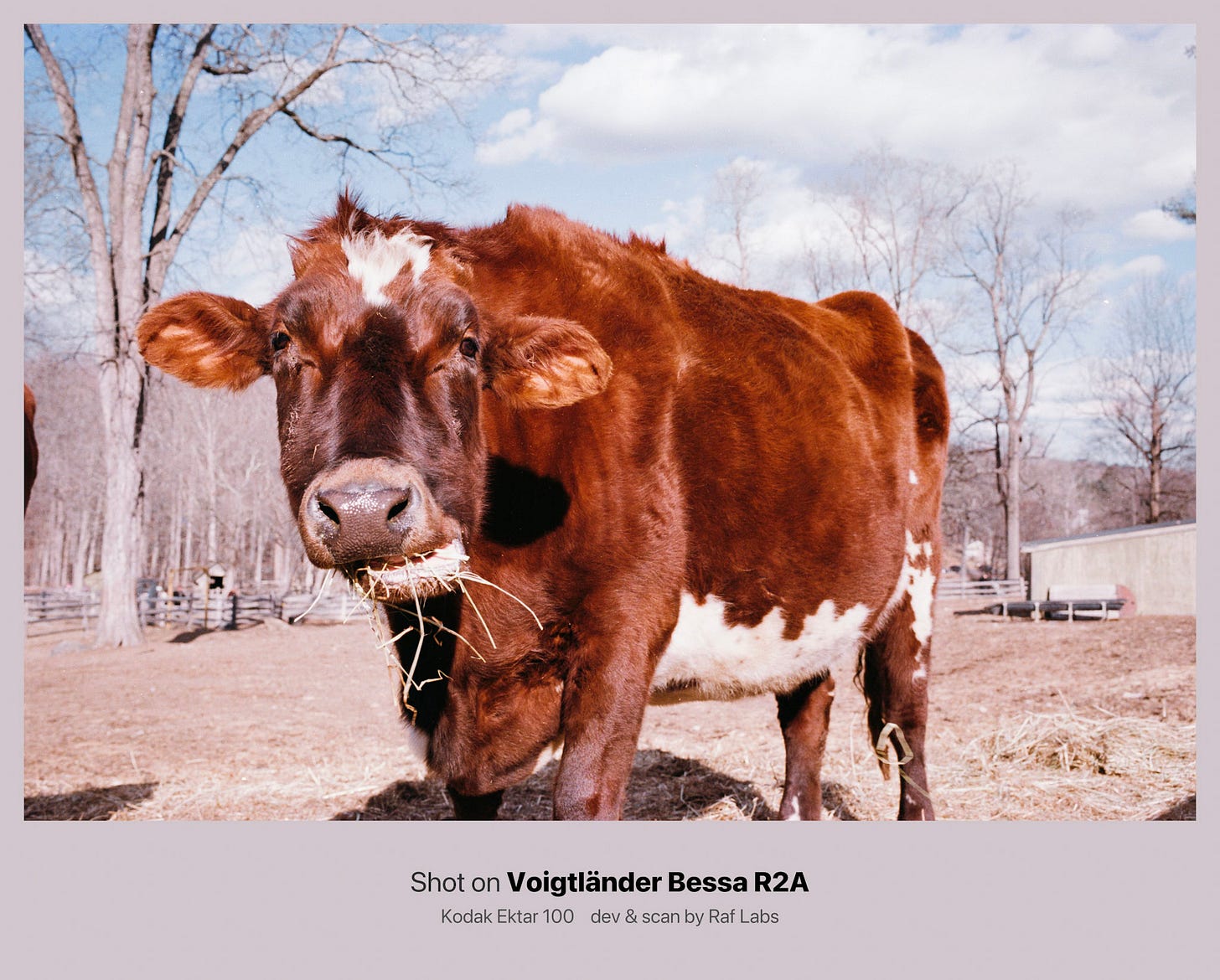
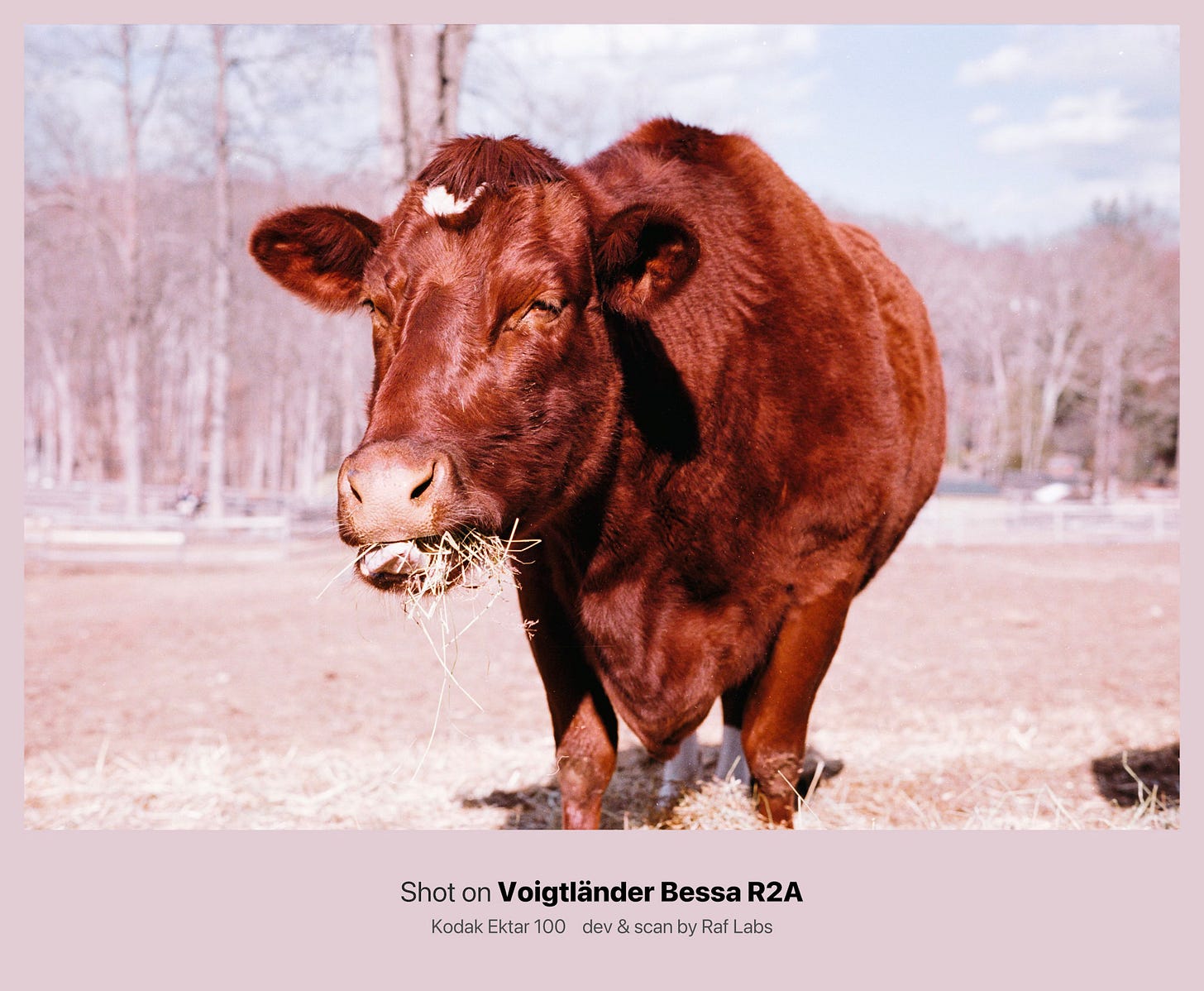
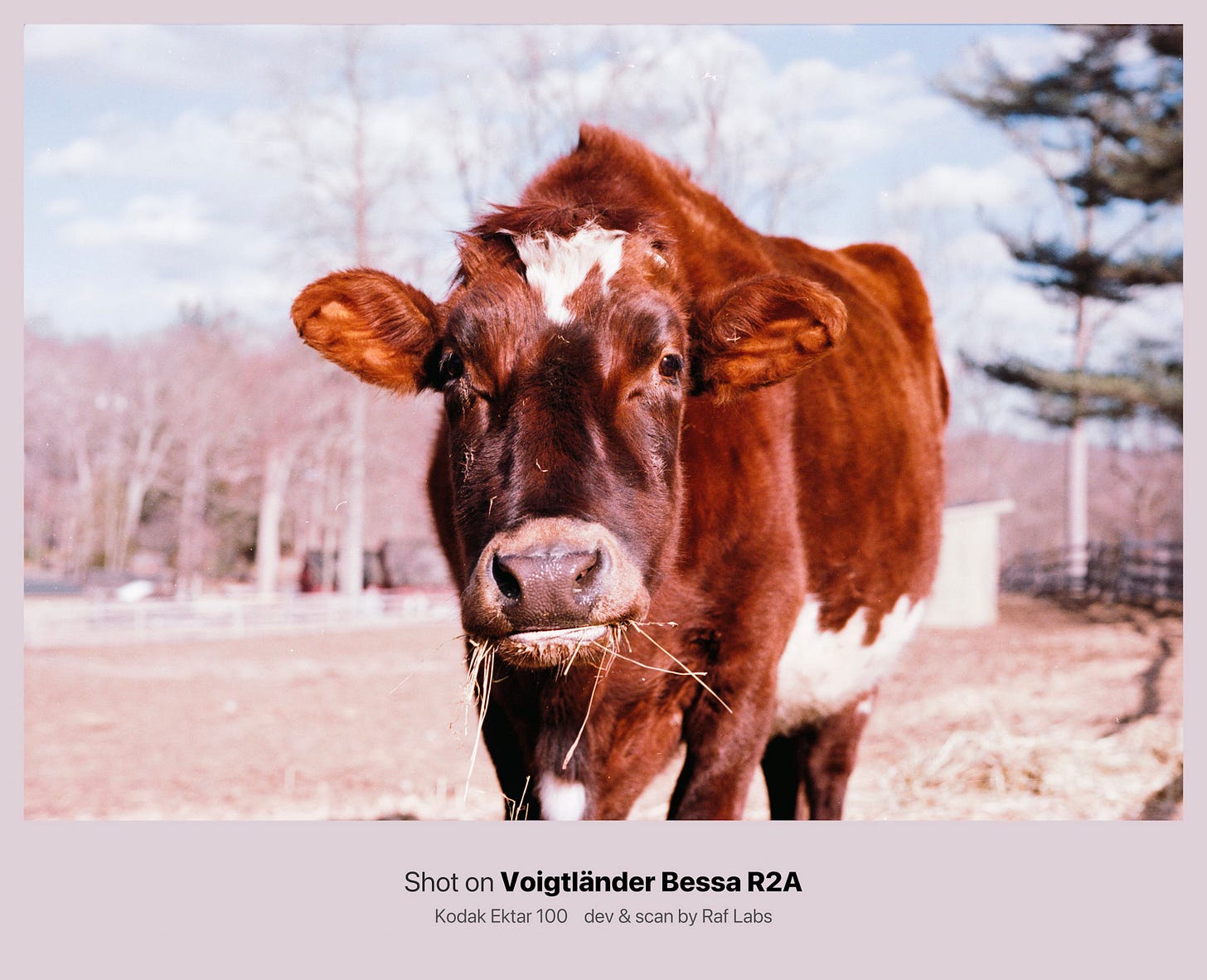

Bessie is awesome and beautiful! That is a very interesting topic. I never thought about the paradox of choice. Although I am not a photographer, this post gave me food for thought for my current situation. I do feel very lost with the infinity of options I have at hand. Maybe I need to stop to make fewer but more intentional choices as well. Thanks for the read, Raf!
It takes discipline not to edit my film scans the way I would a normal digital file. As tempting as that is, I try to limit my edits to just exposure and color correction to try to replicate what the print would actually look like.